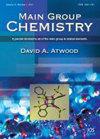Application of solid-phase microextraction/gas chromatography method for extraction, identification, and comparison of polycyclic aromatic hydrocarbons from industrial and traditional edible oils
IF 1
4区 化学
Q3 CHEMISTRY, MULTIDISCIPLINARY
引用次数: 0
Abstract
Polycyclic aromatic hydrocarbons (PAHs) are a large group of cyclic aromatic hydrocarbons that have been listed as hazardous substances by the US Environmental Protection Agency and the World Health Organization. Edible oils are one of the important food sources of PAHs, which are created during the processes of drying oil seeds or refining edible oils. The aim of this research was to evaluate PAHs (Naphthalene, Fluorene, Phenanthrene, Anthracene, Fluoranthene, Pyrene, Benzo[a]pyrene, and Benz[a]anthracene) in industrially produced edible oils (sunflower, corn, canola, olive and sesame) and traditional oils (press) (yellow animal oil, olive, sesame and sunflower oil) in Iran, and these samples were randomly prepared, sampled and analyzed from the stores of West Azarbaijan province (Urmia, Iran). PAHs were extracted from oily samples by solid phase microextraction method and analyzed by Gas Chromatography-FID. The highest concentration of PAHs (μg/L) were related to different oils as the follow: naphthalene (4.61 in animal yellow oil), Fluorene (0.75 in canola), Phenanthrene (0.21 in canola), Anthracene (0.01 in animal yellow oil), Fluoranthene (2.53 in canola), pyrene (2.67 in canola), Benz[a]anthracene (0.44 in corn) and Benzo[a]pyrene (0.45 in canola). The concentration of Benzo[a]pyrene was compared with the European Union (EU) limit value (μ>2) using one-sample t-test. In industrial canola oil, with an average concentration of 2.593μg/kg, Benzo[a]pyrene was higher than the European Union standard of 2μg/kg. Some of the studied aromatic hydrocarbons could not be detected in some oils.固相微萃取/气相色谱法在工业和传统食用油中多环芳烃的提取、鉴定和比较中的应用
多环芳烃(PAHs)是一大类环芳烃,已被美国环境保护署和世界卫生组织列为有害物质。食用油是多环芳烃的重要食物来源之一,多环芳烃是在油籽干燥或食用油精制过程中产生的。本研究的目的是评价伊朗工业生产的食用油(向日葵、玉米、菜籽油、橄榄和芝麻)和传统油(压榨)(黄动物油、橄榄油、芝麻和葵花籽油)中多环芳烃(萘、芴、菲、蒽、氟蒽、芘、苯并[a]芘和苯并[a]蒽)的含量,并从伊朗乌尔米亚西部阿扎尔贝扬省(Urmia)的商店随机制备、取样和分析这些样品。采用固相微萃取法提取油样中的多环芳烃,并用气相色谱- fid分析。多环芳烃(PAHs)浓度最高的油类依次为萘(动物黄油4.61 μg/L)、芴(菜籽油0.75 μg/L)、菲(菜籽油0.21 μg/L)、蒽(动物黄油0.01 μg/L)、氟蒽(菜籽油2.53 μg/L)、芘(菜籽油2.67 μg/L)、苯并[a]蒽(玉米0.44 μg/L)、苯并[a]芘(菜籽油0.45 μg/L)。采用单样本t检验将苯并[a]芘浓度与欧盟(EU)限量值(μ>2)进行比较。工业菜籽油中苯并[a]芘的平均浓度为2.593μg/kg,高于欧盟标准2μg/kg。所研究的一些芳烃在某些油中无法检测到。
本文章由计算机程序翻译,如有差异,请以英文原文为准。
求助全文
约1分钟内获得全文
求助全文
来源期刊

Main Group Chemistry
化学-化学综合
CiteScore
2.00
自引率
26.70%
发文量
65
审稿时长
>12 weeks
期刊介绍:
Main Group Chemistry is intended to be a primary resource for all chemistry, engineering, biological, and materials researchers in both academia and in industry with an interest in the elements from the groups 1, 2, 12–18, lanthanides and actinides. The journal is committed to maintaining a high standard for its publications. This will be ensured by a rigorous peer-review process with most articles being reviewed by at least one editorial board member. Additionally, all manuscripts will be proofread and corrected by a dedicated copy editor located at the University of Kentucky.
 求助内容:
求助内容: 应助结果提醒方式:
应助结果提醒方式:


